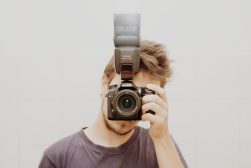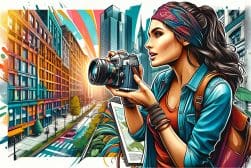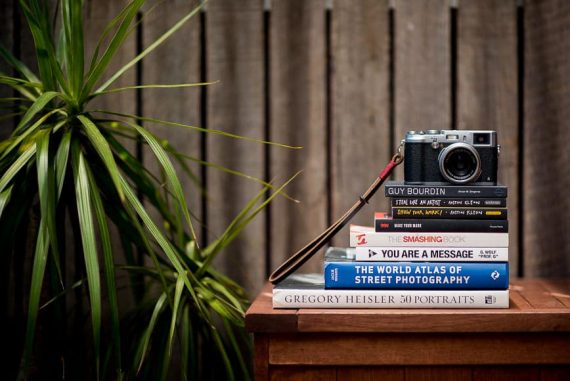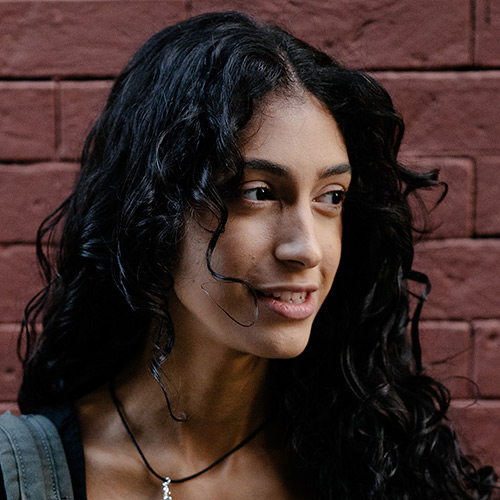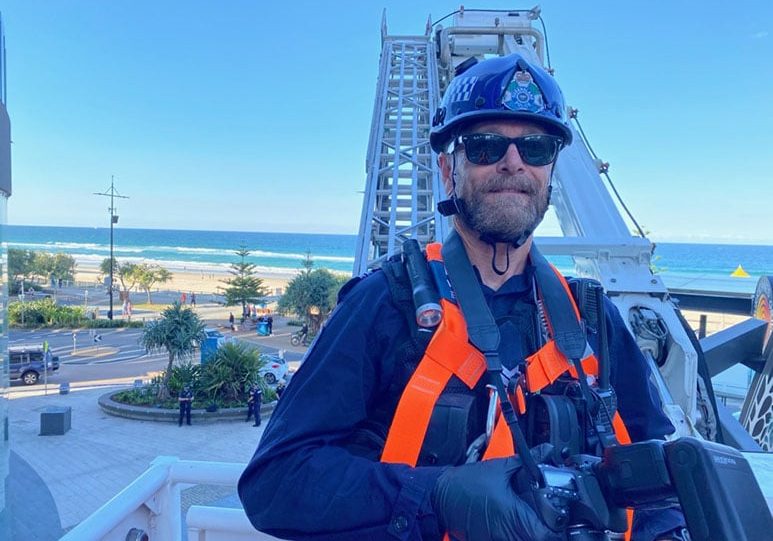
Crime Scene Photography: Interview with a Forensic Photographer
Learn about crime scene and forensic photography in this exclusive interview with an experienced photographer from the Gold Coast Constabulary in Australia.
Learn | By Usnea Lebendig
Becoming a forensic photographer is probably not at the top of most people’s wishlists when it comes to camera-related professions.
However, crime scene photography is an important part of the police investigation process and can be challenging and rewarding just like any other photography job.
A crime scene photographer needs to document the location and appearance of each item of physical evidence at the scene, as well as any subjects involved.
Taking photos of everything from fingerprints to tire impressions requires specific photography skills, especially when much of the work is undertaken in low light.
In this article, we interview Jack King, a professional crime scene photographer on the Gold Coast, Australia.
Crime Scene Photographer Interview
Could you tell us a bit about yourself? How long have you been a crime scene investigator?
My name is Jack King. I’m a senior constable with the police. I’ve been with the police for 26 years. For the last 19, I’ve been a crime scene investigator.
Did you have a photography background before you became a crime scene investigator?
Yes. Back in the early days, I went to the uni where I did an environmental science degree. A six-month photography course was a part of that.
Back then it was all black and white, of course, but it introduced me to the world of photography, right through from when you take the photo to developing the image in the darkroom and getting the result at the end of it.
I’ve always loved photography. It’s definitely been an interest, which has paid off in my current job.
Did you start your career as a crime scene photographer with film photography or did you go straight to digital?
We started with film.
While digital cameras were available in 2003 when I started in forensics, the police departments were still using film. We did our own fingerprint development, but most of the crime scene images were sent to Brisbane to be developed.
What does crime scene photography actually entail?
It varies from day to day, but our bread and butter would be what we call “volume crime” crime scene photography – break and enters, stolen motor vehicles and assaults. It goes up from there, from rape and armed robbery to traffic accidents, homicides and suicides.
Much of our time is spent collecting evidence like fingerprints, bullet trajectories. footwear impressions, and bloodstain patterns.
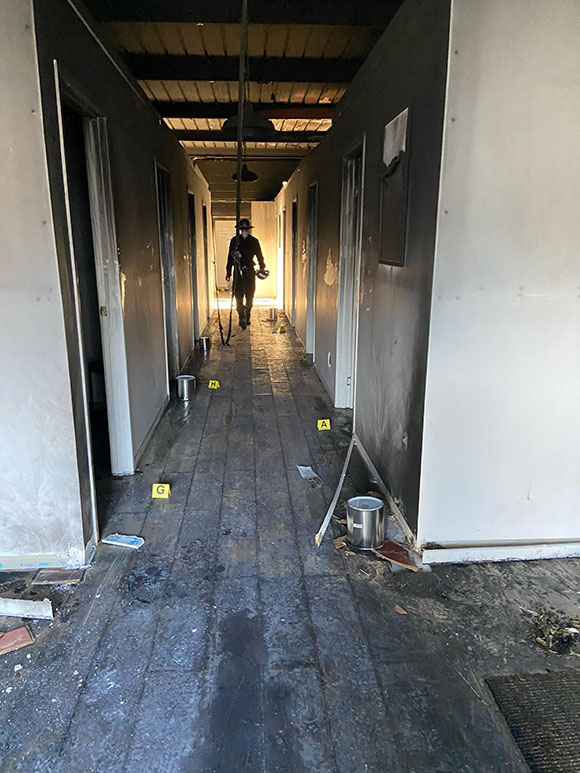
Physical evidence collected at a crime scene investigation.
The digital photographs get downloaded to our laptops and then sent off to headquarters while we’re still at the crime scene. From there the images get put into the mainframe – sometimes within minutes. Most of the time searches can be done straight away.
Back in the old days, it could take 6 weeks before we had a fingerprint identification. By that time Joe Bloggs has gone from point A to point B, somewhere out of state. Now we know before we leave the job if we have a fingerprint identity.
What gear do you use? Do you use a macro lens for fingerprints?
We used to use a 50mm macro lens for fingerprints. In fact, we used to have a dedicated camera with the ISO and shutter speed set up specifically for fingerprints. We used a separate camera for the crime scene photography. It had a different lens and different settings.
Now they’ve cut the budget, so we only have one camera and one lens: a Canon 80D with a Sigma 17-70 mm zoom lens.
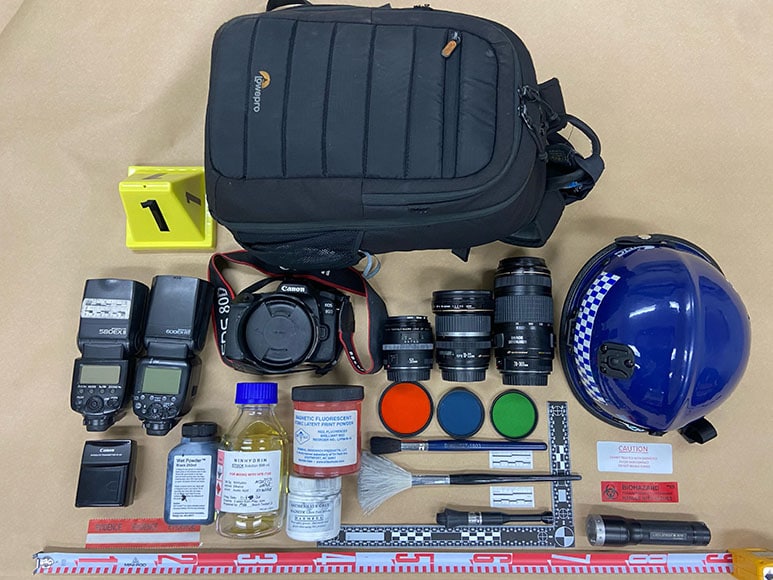
Cameras, lenses, flashes and remote shutter release are used in crime scene photography.
The Sigma is a bit challenging to work with. When we’re photographing fingerprints, we normally take the photograph perpendicular to the surface, which is normally flat.
The barrel on this particular lens often slips, making it difficult to keep the focus when the other hand is holding the flash.
They’ve given us a rubber band to keep it from slipping, but it’s obviously far from ideal.
How Much Do You REALLY Know About Photography?! 🤔
Test your photography knowledge with this quick quiz!
See how much you really know about photography...

Some forensic investigators also make use of a microscope for photography of evidence hidden from the naked eye.
How often does your gear get updated?
They update the equipment every couple of years. At the moment we have Canon 80Ds, but after about three years they’ll give us a whole new set. Then they’ll sell off the old cameras.
Unfortunately with the budget cut, instead of buying 400 cameras, they’ll buy 150. Now, instead of each individual getting a camera there will be just one per car.
Most crime scene photographers have just one flash, but I have two – one set up for fingerprints and one set up for crime scenes.
Do you use the flash on-camera or off-camera?
For fingerprints, we use the flash off-camera with a trigger. For 95% of the crime scenes, we use the flash on-camera. We just take it off when it’s a bit hard to get into a particular spot.
What were the primary challenges when you were first starting out?
Timed exposures were one of them, particularly back when we were using film. You just didn’t know how the images were going to turn out. You’d take maybe three or four photographs of each scene, varying the exposures and sometimes adding a bit more flash.
Now with digital, you can pretty well see what you’re going to get… but getting the exposure just right can still be something of a challenge, especially with big crime scenes when you’ve got no light and it’s pitch black. You’ve got to jump around with that flash and dump as much as you can in.
Another challenge is when it’s nighttime and you’re on a motorway or somewhere similar and there are a lot of police vehicles with flashing lights and reflective stickers. Again, you just have to work with it.

Protective clothing needs to be worn at all times on crime scenes.
Luckily we’ve got a good photographic section, so our photos might just be barely above the grade but they’ll tweak it and make them a bit better.
Also, in the older days, they used tungsten lighting on the streets. That would create a yellow effect, so we’d often need to set a custom white balance. Nine times out of ten that would fix it up.
Another challenge is to be able to take a series of photographs quickly. We get a lot of traffic accidents on the motorway, which they always want to open back up as quickly as possible. We get in there and then try to do an hour’s job in fifteen minutes.
Getting into tight spaces can be quite a challenge too – especially if there are a lot of reflective surfaces around. We often end up needing to use a transmitter so we can get the flash in low.
The main thing new crime scene photographers have trouble with is just understanding depth of field and how to adjust the ISO to suit different lighting types. Nighttime photography is a big one for them as well.
Do new officers come into it without any basic photography skills whatsoever?
New police officers come in with basic photography skills. When you do the forensic course, there’s a three-week crime scene photography course that covers that component.
Now, though, before they apply for the course one of the key selection criteria is to have some type of photographic experience. I was lucky in that respect because I already had a keen interest in photography and already understood the basics.
How do the editors know to what extent they can edit a photo? For example, if you raise the exposure, the colour’s going to change…
We don’t really come across scenes like that very often, where the precise colour has been that important. Sometimes in some of the traffic scenes, I’ll want the lighting to remain the same. In those cases, we just let them know we want this as it is, and not to edit.
Are these photos to be used in court? Where do they end up?
All of the photographs end up in our mass storage system at headquarters. Probably about a quarter of the images we take are used for court. The rest are stored just in case they’re needed for court.
What else do you need to know to be a good crime scene photographer? Do you need to know forensic science? Are there any police matters you need to be aware of?
I had a basic science degree to start off with, which was a little bit of help. But you don’t really need to come in with a forensic science background.
You’ll need to take a six-month in-house course and then spend twelve months on the job. A substantial part of the course is dedicated to forensic science, so you’ll learn it there.
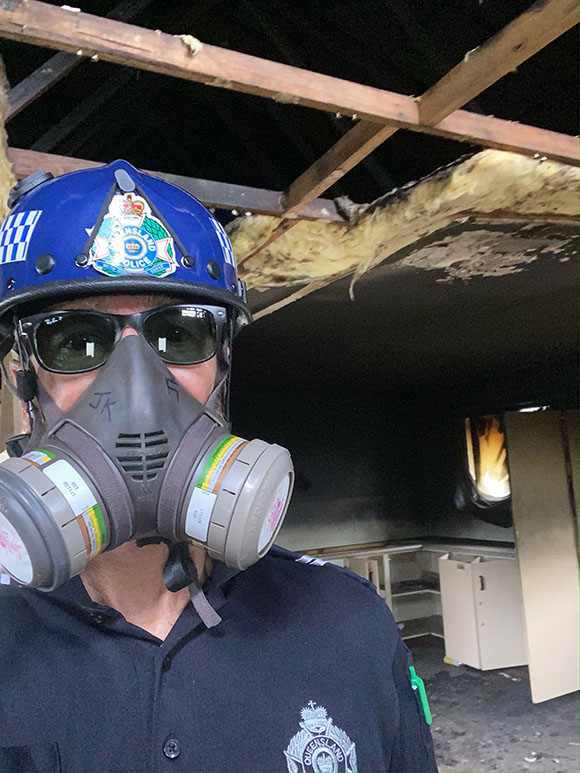
Still, photography is just a small part of it, really, and it’s not the only way that we capture photographic evidence.
We also use video cameras and drones, though these are used by other sections, not ours. There’s also a 3d scanner for interactive crime scenes.
Are there any mistakes that you’re willing to share?
I’ve definitely had some blurred photos, but it’s usually easy to get around that with crime scene investigations, though. I always take at least two photographs to make sure that one, at least, is in focus.
PR shoots are a different story, though.
What do PR shoots involve?
Public relations shoots happen when there’s anything involving the community and the police. Maybe a police station is opening up or it’s time for medal presentations…
I’ve definitely had some blurred photos during PR shoots too, but here again, I always take two and I always check to make sure the eyes are open.
During medal presentations, you’ll sometimes have a high ranking police officer giving the medals out to 150 participants. You just won’t have time to be taking a photo and then having a look to make sure it’s ok. I just always take two and then most of the time it turns out ok.
But back to mistakes, I’ve also accidentally erased a memory card full of photos. I didn’t check and it was a big crime scene. Luckily it was ok in the end.
So the police force uses you for just anything if you’re not busy that day?
Yeah, any PR. I love doing PR. It’s a nice break from taking photos of dead bodies.
What do you enjoy most about your job? What least?
Photography-wise I really just enjoy taking photographs. I also love being out there with the community.
As far as crime scene investigation goes, I particularly enjoy taking fingerprints because there’s a fair chance that the offender will get identified. I enjoy that part of it.
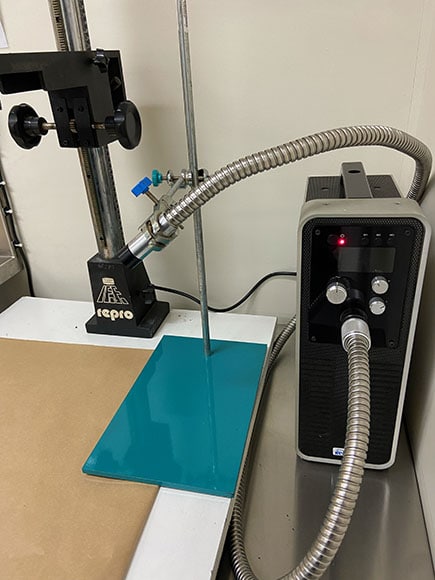
A Poli Light is used to enhance fingerprints for photos.
Least? There are difficult scenes, particularly those that involve death and destruction. At the last count, I’ve photographed over 470 dead bodies, which is a lot to keep upstairs. It’s impossible not to get affected. There are scenes you go to that aren’t very nice, that involve children or families or whatever else.
There are also jobs I don’t like, particularly when I’ve got to take invasive photographs of loved ones. Sometimes there will be grieving people nearby.
Nine times out of ten I can treat it as a job, but when you start relating it to it being a loved one or a person or a family member, that’s when it starts getting a little bit difficult.
Is there a high turnover rate among crime scene photographers?
Unfortunately, there is.
Since I’ve been in we’ve lost on average one person every 18 months due to mental health. What I mean by lost is that these people are totally unable to work at all in any other job. They’re just gone and medicated.
That’s a pretty high number, so we’ve begun to implement a few strategies – those of us who are staff rather than our bosses. We put it to our bosses and they agreed. Things like, if you go to a pretty graphic scene, you’ll then have the rest of the day off and maybe not come in the next day as well.
Also, being able to exercise during work time twice a week so you can go home with a clear mind. Or, if you had that yucky job, just go for a walk or for a swim and then go home.
These strategies have really helped. It’s also helped people with their physical fitness as well. Crime scene photography can be very demanding mentally and that creates a physical toll as well.
Sound like you’ve got to be strong in mind and body!
Yeah! There have been a couple of jobs which have hit close to home, I suppose. In particular, attending a homicide scene where I knew the person or any crime that involves innocent people.
A fair percentage of our homicides are drug deals, but then close behind that is domestic violence, which is horrible.
Any particularly memorable experiences you’re comfortable sharing?
One of the ones that stuck out in my memory was a shooting scene quite some time ago.
In the old days, our ballistics section would use red string to depict where the shot was possibly fired from to where it entered the wall or whatever. Now we use lasers, so it’s a lot quicker and it’s easier to photograph, but back then it was all red string.
I remember someone’s house got shot up…something like twelve shots. I just remember all this red string everywhere. One went through the door, through the wall, and into the fridge.
On the more grisly side, there was one where we a had suicide at Perlingbrook Falls, at Springbrook. At the time a storm had gone through so the track was closed.
Perlingbrook Falls is a lookout down over the falls. The drop is about 110 meters. They jumped off and landed at the bottom of the falls. Of course, we had to go down and recover the body.
The State Emergency Services (SES) were there and they lowered a stretcher down to where the body was in the waterfall. We then had to rappel down because the track was closed.
I didn’t have a backpack at the time. All I had was a camera with a flash which was on my back. We free fell for the first 25 meters, bounced, and when we got to the hundred-meter mark we’d run out of rope and there were still 15 meters to go.
Luckily, we were going along something like a 45-degree slope at that point, so we could sort of shimmy down on our butts to the track. I slid down first and as I’m sliding my partner called out “Rock!” I look behind and there’s a rock the size of a small fridge tumbling down. I just managed to duck out of the way as it went whistling past.
We both made it down to the track safely and then walked around to get to where the body was. It was perched on another part of the waterfall on a ledge that was really dangerous and hard to get to.
My partner, who had all the gear on, climbed up and took all the photos. He actually took quite good photos.
It was a bit grisly though because there were eels in the water.
Another particularly memorable moment also involved a dead body. It was a suicide that took place in a small, concrete garage. This fellow had been deceased for probably three weeks. He was wedged between the wall and the car, so it was a very tight scene.
Because there was so little room to move around in, we had to use a remote flash and a transmitter to get in there. There were decomposition fluids everywhere from the body rotting away – blood and maggots – very, very unpleasant. We were slipping around in them, and of course, I drop my flash.
I got it cleaned up alright, but sometimes you just can’t get rid of the smell.
Do they train crime scene photographers for things like rappelling down cliffs or working on heights?
No. I did come into it with a bit of training, but they don’t train you for these things.
Why would someone want to become a crime scene photographer?
For me personally, it’s about being able to help solve the crime – particularly in the case of homicides – whether it be through the photographic documentation or the fingerprint evidence or just being able to paint a picture of what happened for the courts.
Crime scene photography is just a small part of a big wheel, but without our section, the wheel wouldn’t turn. It’s a way of giving back to the community.
Sure, there’s a lot of gore and unpleasantness, but some people actually find that exciting.
Also, crime scene investigation can take you anywhere in the state. You get to travel. The world’s your oyster.

Check out these 8 essential tools to help you succeed as a professional photographer.
Includes limited-time discounts.






